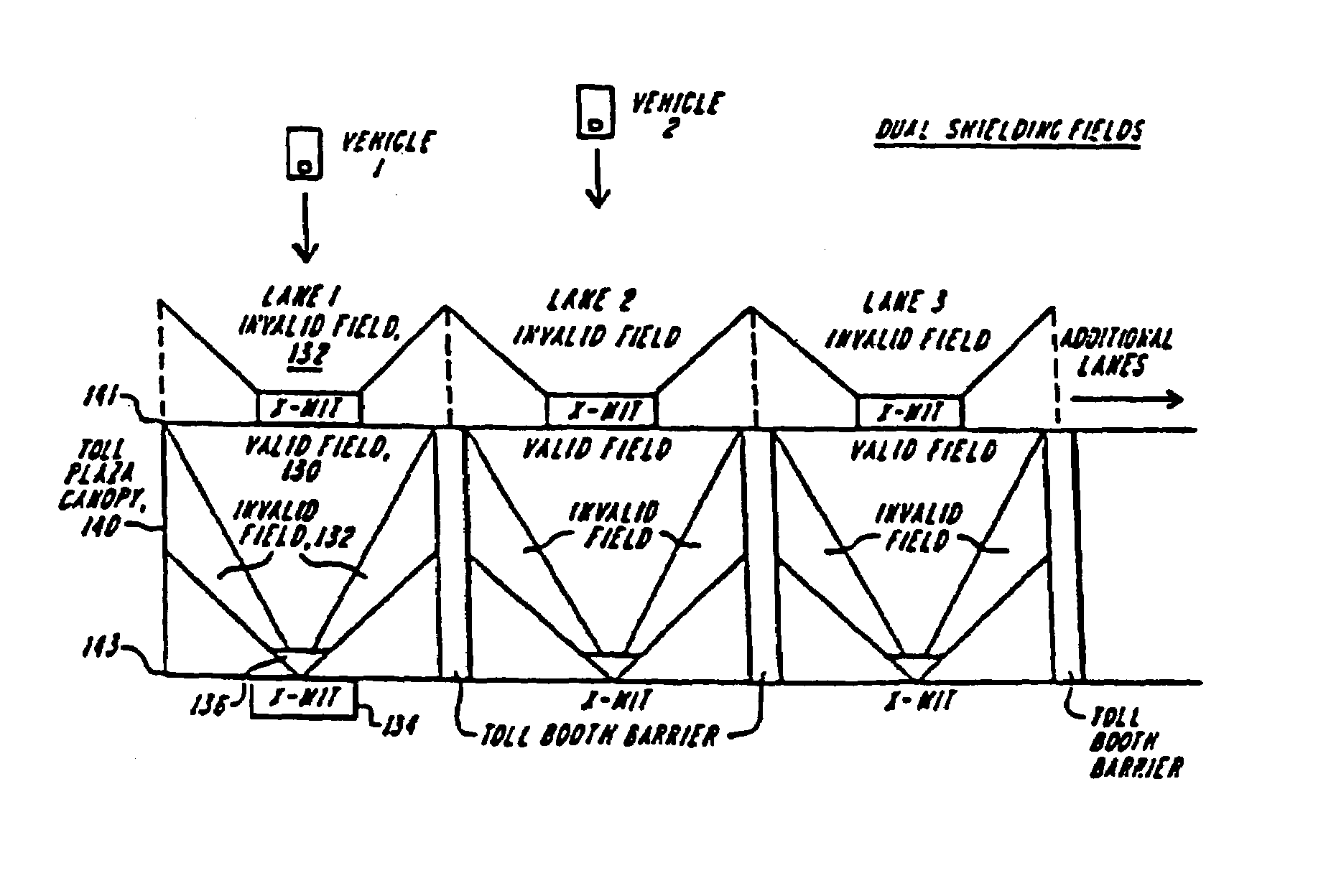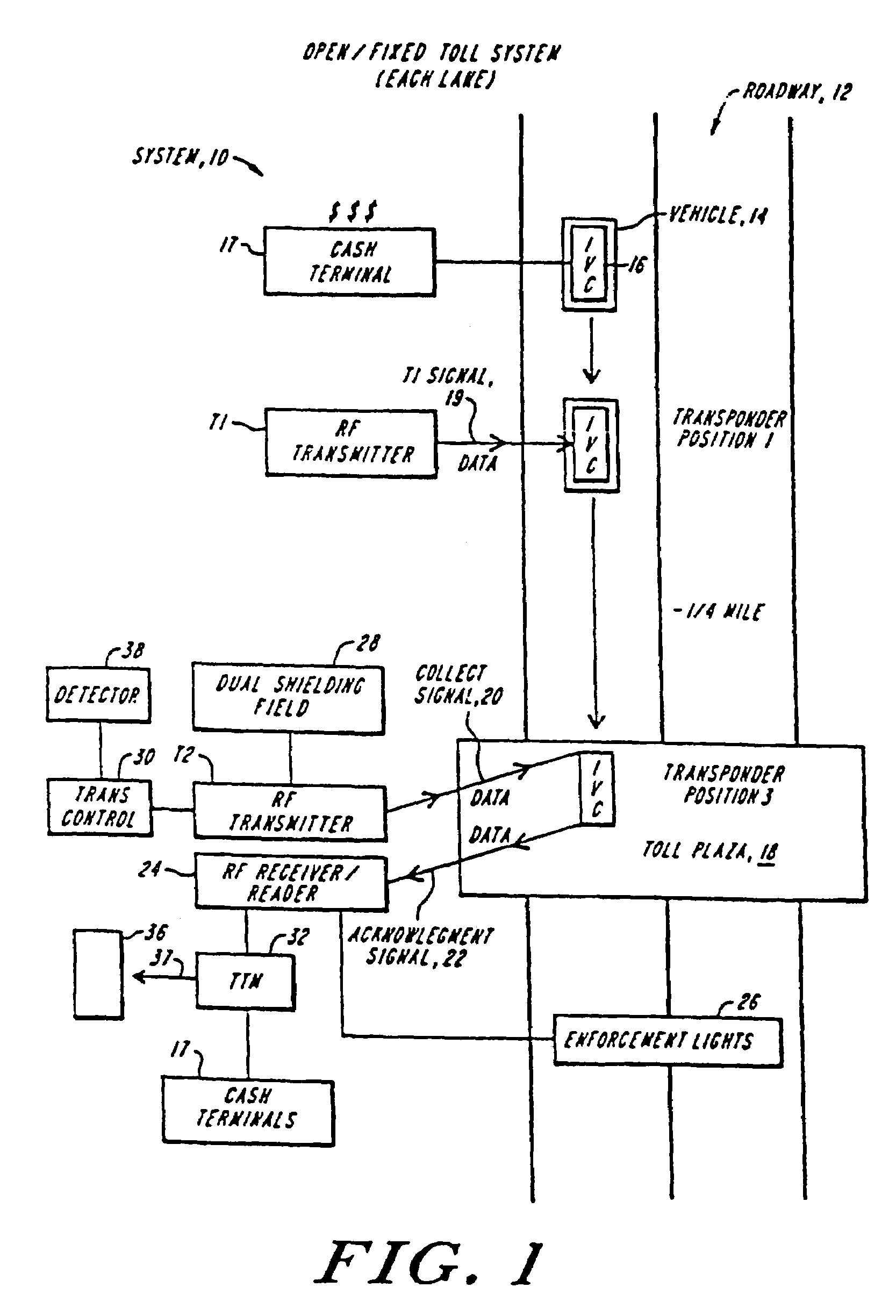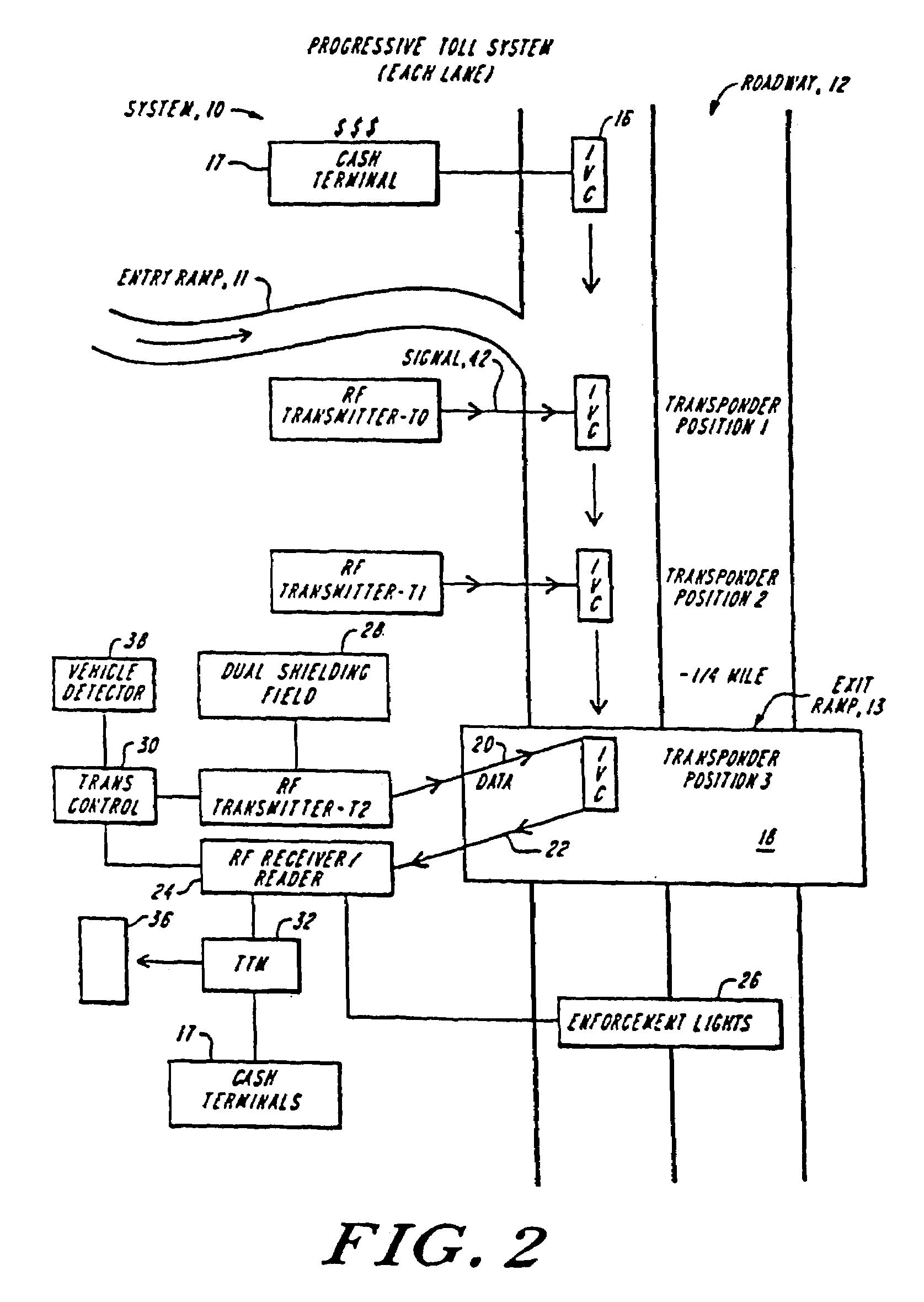Electronic vehicle toll collection system and method
a technology for electric vehicles and toll collectors, applied in traffic control systems, instruments, reradiation, etc., can solve the problems of reducing productivity, affecting highway throughput and safety, and collecting tolls by conventional means, so as to increase the rate of toll collection and enhance highway safety
- Summary
- Abstract
- Description
- Claims
- Application Information
AI Technical Summary
Benefits of technology
Problems solved by technology
Method used
Image
Examples
embodiment 210
[0057]FIG. 11 shows a block diagram of a multi-lane vehicle location system 210 according to the invention. The illustrated embodiment 210 enables vehicle position to be determined and transferred from vehicle transponders, located in host vehicles 212–216, to the lane transmitter units 218–222, as the vehicles 212–216 travel along the roadway 224.
[0058]For simplicity, FIG. 11 depicts a three-lane road 224 on which the direction of travel for a given host vehicle, referred to herein as the “downstream” direction, is indicated by arrows. Those skilled in the art will appreciate that the invention can be practiced in connection with roadways having additional lanes, including multi-lane divided highways, bridges and tunnels. As one skilled in the art will appreciate the invention can also be practiced in connection with numerous other transport systems, such as railways, and waterways.
[0059]The illustrated embodiment includes two primary components; the vehicle transponders 228, and t...
first embodiment
[0237]An illustrative embodiment of this aspect of the system is implemented as follows. When the IVC is originally provided to the user, the user pays to acquire an initial balance, e.g., fifty dollars, and selects from one of several available “minimum balance” levels (e.g., twenty or thirty dollars) and also executes an authorization for billing, to a specific credit card number, telephone account, bank account or the like, any account transactions which are undertaken to maintain the minimum level. The authorization instructs the IVC to top up the account by a fixed increment, e.g., twenty dollars, when the balance drops to or below the minimum. This authorized billing information becomes part of the user's file in the central data system, while the threshold lower balance and the increment amount are entered in appropriate program instructions in the non-volatile memory 52 of the IVC. Software 53 then implements the balance check as described above against the designated thresh...
PUM
 Login to View More
Login to View More Abstract
Description
Claims
Application Information
 Login to View More
Login to View More - R&D
- Intellectual Property
- Life Sciences
- Materials
- Tech Scout
- Unparalleled Data Quality
- Higher Quality Content
- 60% Fewer Hallucinations
Browse by: Latest US Patents, China's latest patents, Technical Efficacy Thesaurus, Application Domain, Technology Topic, Popular Technical Reports.
© 2025 PatSnap. All rights reserved.Legal|Privacy policy|Modern Slavery Act Transparency Statement|Sitemap|About US| Contact US: help@patsnap.com



